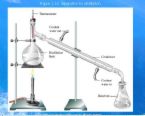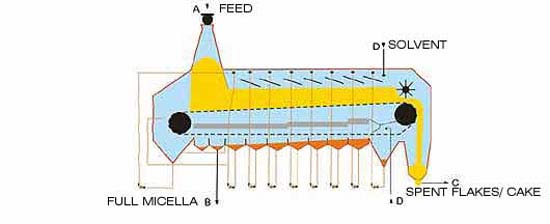Essential
Oils
Singapore's Essential Oil
website
Different Ways of Producing Essential OilsOils are volatilized or diluted in a carrier oil and used in massage, diffused in the air by a nebulizer or by heating over a candle flame, or burned as incense. There are 3 popular ways of doing this. This method is most
commonly used to produce essential
Before the process of distillation was discovered, Expression was the method which most people back then used to produce essential oils. This method is used mainly on citrus fruits, such as lemons and oranges. Most citrus peel oils are expressed mechanically or cold-pressed. The fact that these fruits are available everywhere, makes the value of the essential oils made from this fruits cheapper then the rest. this method is also relatively cheapper the produce. Last method to produce essential oils is Solvent Extraction. For most flowers, they contains too little volatile oil to go through the process of expression thus this would be un productive to still put the plants through expression. Sometimes the cheimcial components of the flower is too delicate and can easily be denatured by high heat caused by the Distillation Method. The solution to these problems, is to use the method Solvent Extraction. Although highly fragrant,
concretes contain large quantities of non-fragrant waxes and
resins. As such another solvent, often ethyl alcohol, which
only dissolves the fragrant low-molecular weight compounds, is
used to extract the fragrant oil from the concrete. The alcohol
is removed by a second distillation, leaving behind the
absolute. Supercritical carbon dioxide is used as a solvent in supercritical fluid extraction. This method has many benefits, including avoiding petrochemical residues in the product and the loss of some “top notes” when steam distillation is used. It does not yield an absolute directly. The supercritical carbon dioxide will extract both the waxes and the essential oils that make up the concrete. Subsequent processing with liquid carbon dioxide, achieved in the same extractor by merely lowering the extraction temperature, will separate the waxes from the essential oils. This lower temperature process prevents the decomposition and denaturing of compounds. When the extraction is complete, the pressure is reduced to ambient and the carbon dioxide reverts back to a gas, leaving no residue. An animated presentation describing the process is available for viewing. Supercritical carbon dioxide is also used for making decaffeinated coffee. However, although it uses the same basic principals it is a different process because of the difference in scale. |
Essential Oils Essential Oil Equipment Ways of Diffusing Essential Oils Essentail Oils Products Contact Us Site Map
Copyright © 2008- Essentialoils.Sg. All rights reserved.
 oils, such as lavender, peppermint etc. The
method involves putting raw plant material such as
flowers, leaves, wood, bark, root and seeds into a
distillation apparatus over water.
oils, such as lavender, peppermint etc. The
method involves putting raw plant material such as
flowers, leaves, wood, bark, root and seeds into a
distillation apparatus over water.
